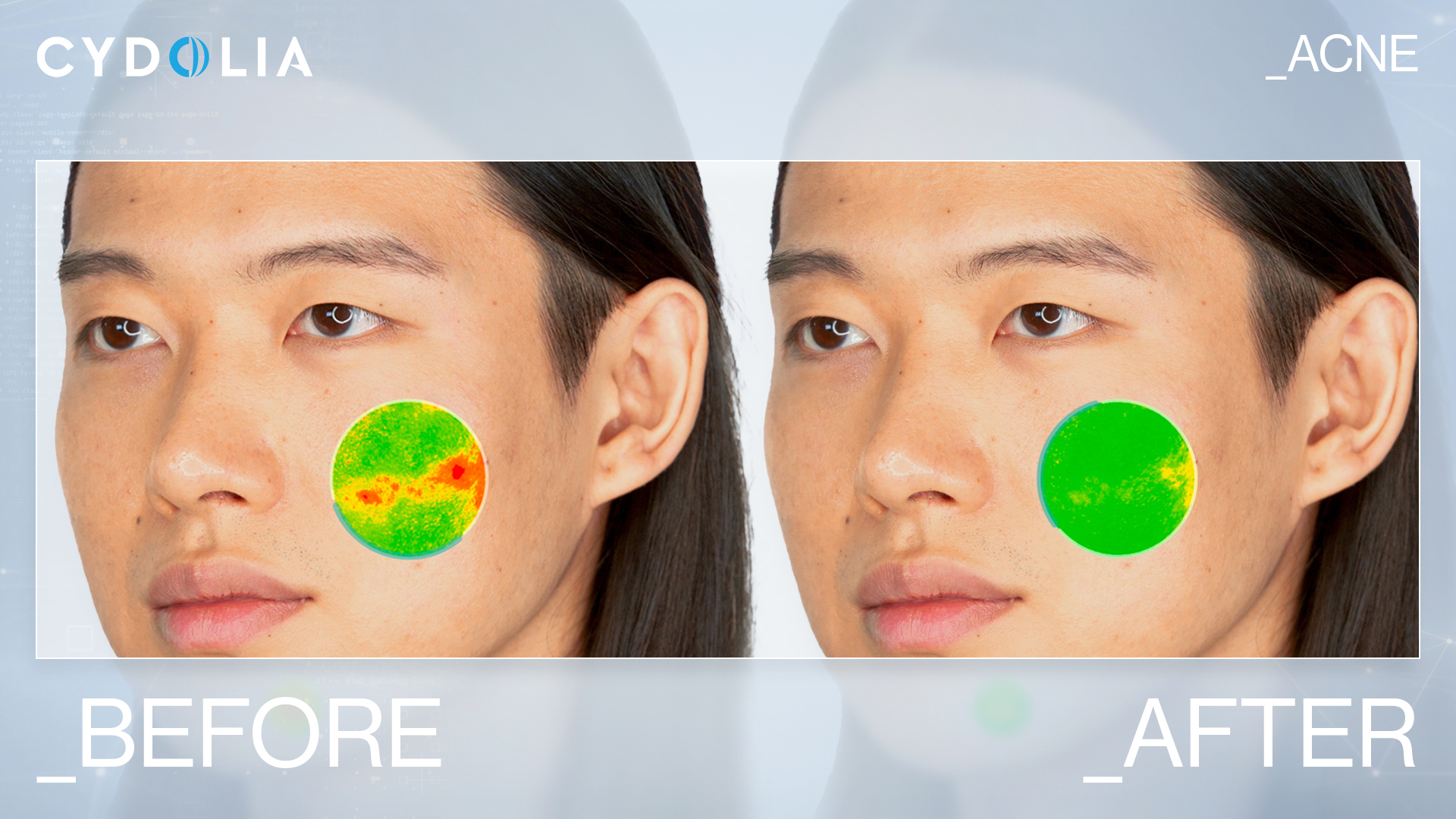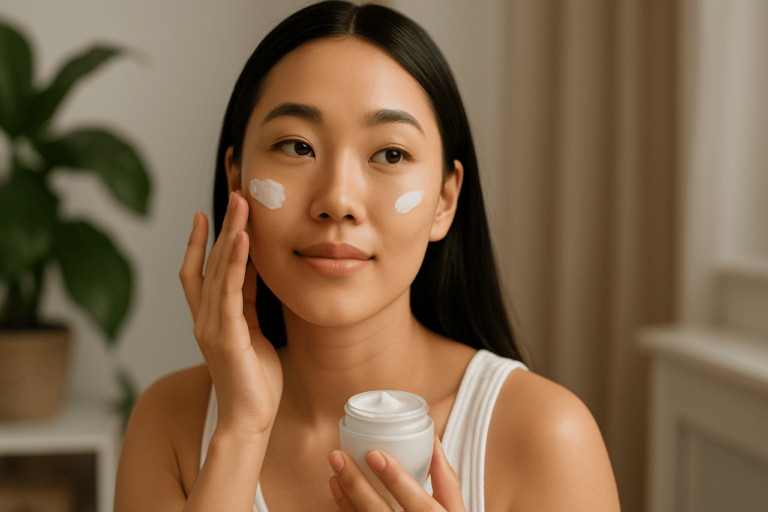According to Jennifer Santos, attorney at the National Advertising Division (NAD), “before and after” images used in beauty advertising are classified as performance claims that must be substantiated, accurate, and representative of the product’s efficacy. In the increasingly data-driven field of cosmetic marketing, these requirements have become more stringent, pushing brands to substantiate their claims with rigorous scientific evidence. This is where Cydolia’s advanced technology plays a pivotal role, providing a scientifically sound approach to linking clinical data directly to marketing visuals.
3D technology for scientific accuracy in cosmetic marketing
Cydolia stands at the forefront of a new era in cosmetic marketing, where precision and data integrity are paramount. Through its sophisticated 3D technology and evaluation framework, Cydolia captures optical, metric, and mechanical skin properties with micron-level accuracy—down to 15μm. This level of detail allows for the creation of realistic 3D models and product simulations that are not only visually compelling but also rooted in solid clinical data.
These models serve as a crucial bridge between scientific findings and consumer-facing marketing materials. By translating detailed clinical trial data into clear, engaging visuals, Cydolia enables brands to present their products’ effects with unprecedented accuracy. Whether it’s demonstrating wrinkle reduction, enhancing skin elasticity, or improving texture, the visualizations are backed by rigorous scientific evidence, ensuring that the marketing claims are not just persuasive but also credible and compliant with industry regulations.
Eliminating bias with controlled 3D Before/After
In the realm of cosmetic marketing, the integrity of “before and after” images is often compromised by variables such as lighting, positioning, and facial expressions, which can introduce bias and distort the perceived effectiveness of a product. Cydolia addresses this challenge head-on by utilizing its advanced 3D technology to meticulously control these variables. By ensuring that every comparison is a 1:1 representation of the product’s true impact, Cydolia’s technology eliminates bias, providing brands with visuals that are both scientifically valid and compliant with the highest regulatory standards.
This control is not merely about enhancing the credibility of the images; it is about maintaining the scientific integrity of the marketing claims. In an industry where consumer skepticism is on the rise, the ability to present unbiased, data-driven visuals can significantly enhance a brand’s reputation and consumer trust.
Designing visualizations that showcase product efficacy
Cydolia’s technology goes beyond mere data representation; it excels in designing visualizations that powerfully convey product efficacy. By utilizing 3D models and simulations, Cydolia helps brands showcase their products’ benefits like never before. These visualizations can highlight specific skin changes, such as wrinkle reduction or improved elasticity, with detailed annotations like arrows and color coding, making the scientific data behind the product both accessible and engaging.
This design capability allows brands to create marketing materials that not only inform but also captivate their audience. Whether targeting a specific demographic or a broader market, Cydolia’s visualizations can be tailored to resonate with various consumer segments, demonstrating the product’s effectiveness in a way that is both visually appealing and scientifically credible.
Customization and precision for diverse audiences
One of Cydolia’s most compelling features is its ability to tailor visualizations to different demographic groups, thereby addressing the diverse needs of the global beauty market. By leveraging its 3D technology, Cydolia allows brands to create customized visualizations for a wide range of skin types, ages, and ethnicities. This not only makes marketing campaigns more inclusive and relatable but also ensures that the claims are substantiated across different consumer segments.
Such precision in targeting is critical for brands looking to expand their reach in a competitive market. By providing scientifically accurate visual representations that resonate with various audiences, Cydolia helps brands build trust and credibility among a broader consumer base. This approach also reinforces the brand’s commitment to transparency and scientific rigor, key factors in establishing long-term consumer loyalty.
The imperative of substantiated claims in cosmetic marketing
In an industry governed by stringent regulatory frameworks, the need for substantiated claims is non-negotiable. Both the Federal Trade Commission (FTC) and the NAD require that all claims made in cosmetic marketing be truthful, not misleading, and supported by robust scientific evidence. Cydolia’s technology enables brands to meet these requirements by offering a seamless integration of clinical data with marketing visuals, ensuring that all claims are scientifically grounded and legally compliant.
This level of substantiation is not merely about avoiding regulatory scrutiny; it is about building a brand that consumers can trust. In a market saturated with products making bold, often unsubstantiated claims, brands that can back their promises with rigorous data will distinguish themselves as leaders in the industry.
The future of cosmetic marketing with Cydolia
As the cosmetic industry continues to evolve, the demand for transparency and scientific validation in marketing will only increase. Cydolia is at the forefront of this shift, offering cutting-edge technologies that not only meet but exceed current regulatory standards. By combining advanced 3D imaging with rigorous clinical trials, Cydolia is setting new benchmarks for how brands can substantiate their claims and build consumer trust.





